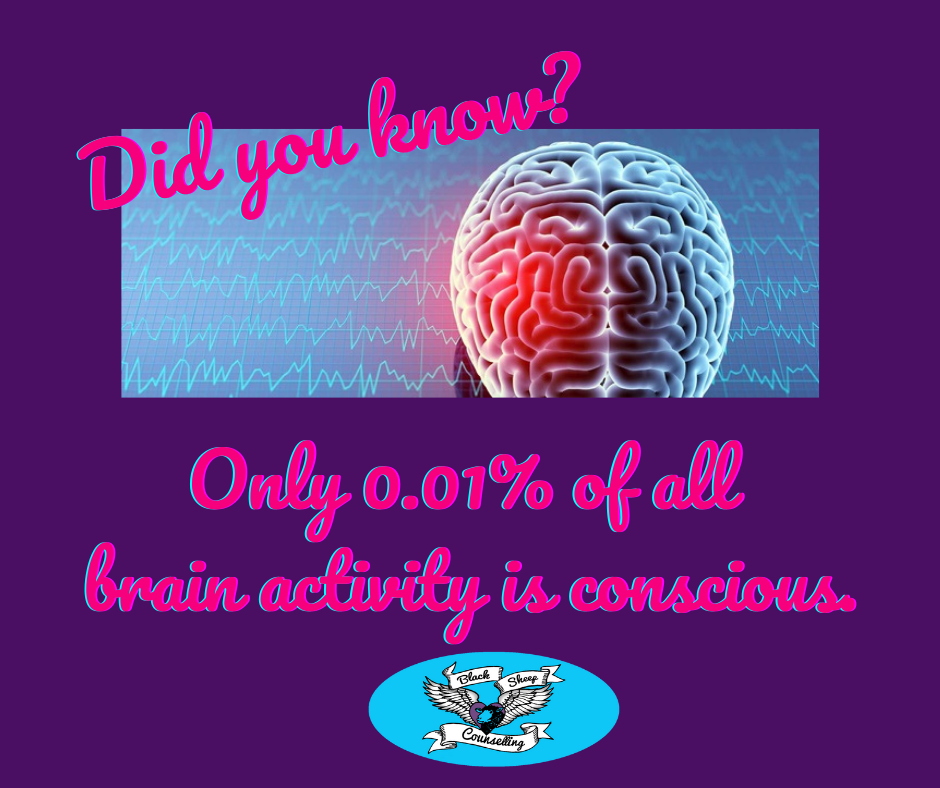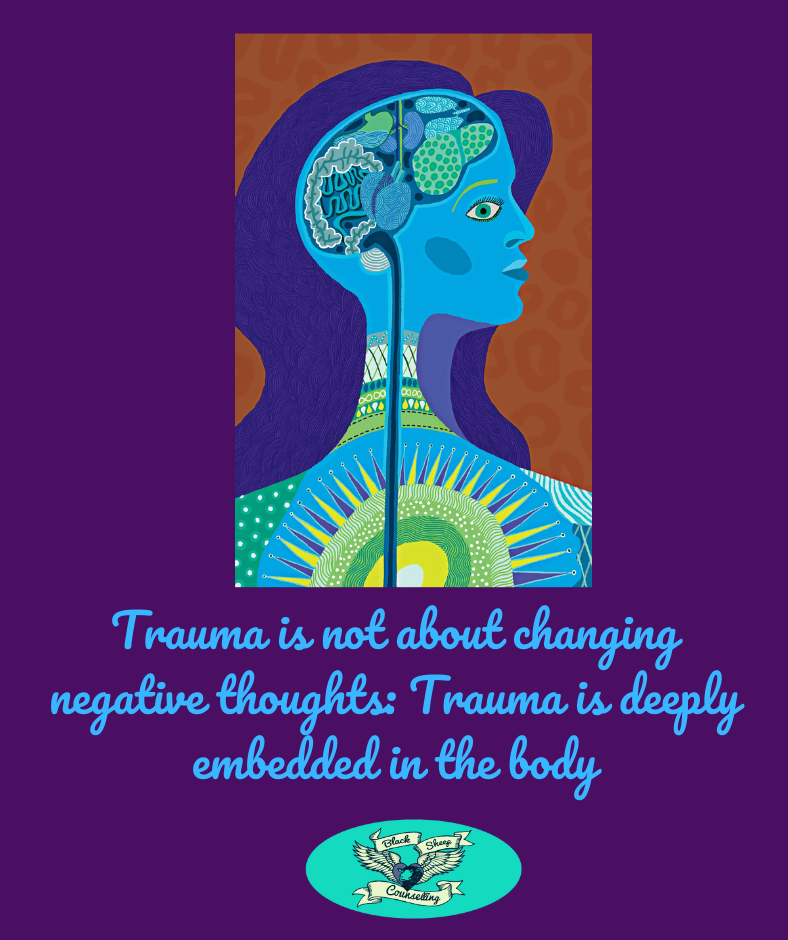Trauma: You can’t *think* your way out of it

Our conscious mind processes 40 things in a single second, whereas our unconscious mind is processing 20,000 things in a single second (that is a whooping 500,000 times faster). Our unconscious mind is assessing for threat based on past lived experience, even when we do not consciously remember that lived experience or we have inherited ancestral/intergenerational trauma in our DNA that was not trauma lived by ourselves (for more on this, check out a relatively new branch of science called Behavioural Epigenetics).
Scientific research teaches us that humans and other mammals naturally possess a defensive stance. In order to survive, humans – like animals – will dedicate their emotional energies to fending off threat (real, or perceived). When in survival mode, we are not able to connect to the “good stuff” like love, play, learning, creativity, genuine connection.
Evolutionary studies commencing with Charles Darwin, and more recently, the Polyvagal Theory developed by Stephen Porges evidence clear links between brain and body, and how deep emotions are not merely maladaptive thinking, but a conversation between the brain, heart, and gut.
One only needs to think about the physical sensations associated with deep grief, betrayal, exclusion, loneliness, or broken heartedness. This is what often gives rise to coping mechanisms such as substance abuse, disordered eating, self-harm, and co-dependency: we desperately want to rid ourselves of the intense physical agony that emotions bring.
Porges illuminated how the polyvagal nerve connects to a variety of organs (brainstem, pharynx, heart, lungs, gut, stomach, and spine). The polyvagal nerve is deeply connected to how safety and danger live in our bodies.
When the social engagement system is activated, the ventral vagal complex (VVC) is in control and we see mirror neurons at work: we smile when we see others smiling, sadness registers in our facial muscles, we nod to indicate we are tracking what the other is saying. When the VVC plays a starring role, our heart rate slows and out breathing becomes deeper. We experience a felt sense of safety and feels calm and are open to connection.
Conversely, when there is a threat to safety or social ties, the organs attached to the VVC go on high alert: our throats and vocal cords tighten, breathing becomes laboured, facial musculature shifts, and the tone of our voice changes. If there is no safety detected, the sympathetic nervous system takes over for the VVC, priming our muscles, heart, and lungs to fight or flee (activating these specific animal defenses).
If no apparent escape is detected, the dorsal vagal complex (DVC) gets switched on. The DVC branches down into the diaphragm, stomach, and intestines. What follows is a slowing down of metabolism and heart rate. The gut shuts down or lets loose (the terms “I was so scared, I shit my pants” or “I was scared shitless” indicate one’s DVC was engaged). Once someone hits this state, there is no access to the neo-cortex (AKA “the upper brain” – where all the sound, rational, decision-making occurs). The lower reptilian brain (responsible for automatic responses) is running the show, thereby arresting awareness and the ability to reason.
We are not effectively able to heal a lot of our stuff without the connection of a safe other, as we need to activate our social engagement systems. When traumatic memory is present, the DVC is turned on and puts someone in a collapse/submit animal defense response. People with post-traumatic stress injury and relational trauma often complain about not feeling connected/attuned to their loved ones, they lack a felt sense of belonging in the world, and often state they do not enjoy physical intimacy of any kind. This is because we need to allow ourselves into an immobilized state and feel safe in that immobilized state to enjoy connection, belonging, and physical intimacy.
Therapies that focus on the thinking brain (neo-cortex) such as Cognitive Behavioural Therapy (whose focus is on intellectualizing and rationalization) are not effective treatments for trauma, as they cannot possibly address the 20,000 things per second that are being processed out of conscious awareness, nor do they factor the biological hijacking that occurs during emotion activation (things that have nothing to do with the thinking brain).
If you are struggling with the residue of trauma, please consider a holistic approach that respects the important interconnection of brain, body, and mind that are needed to effectively do your healing work.

References:
Briere, J. M., & Scott, C. (2015). Principles of trauma therapy: A guide to symptoms, evaluation, and treatment (2nd ed.). Thousand Oaks, CA: Sage.
Herman, J. (1992). Trauma and recovery: The aftermath of violence – from domestic abuse to political terror. New York, NY: Basic Books.
Jackson Nakazawa, D. (2015). Childhood disrupted: How your biography becomes your biology, and how you can heal. Atria Book, NY, NY.
Mate, G. (2011). When the body says no: Understanding the stress-disease connection. Hoboken, NJ: John Wiley & Sons, Inc.
Ogden, P., & Fisher, J. (2015). Sensorimotor psychotherapy: Interventions for trauma and attachment. New York, NY: W. W. Norton & Company, Inc.
Porges, S. W. (2017). The pocket guide to polyvagal theory: The transformative power of feeling safe (1st ed.). New York, NY: W. W. Norton & Company, Inc.
van der Kolk, B. A. (2014). The body keeps the score: Brain, mind, and body in the healing of trauma. New York, NY: Penguin Books.
van der Kolk, B. A., & Fisler, R. E. (1994). Childhood abuse and neglect and the loss of self-regulation. Bulletin of the Menninger Clinic, 58(2), 145-168.

